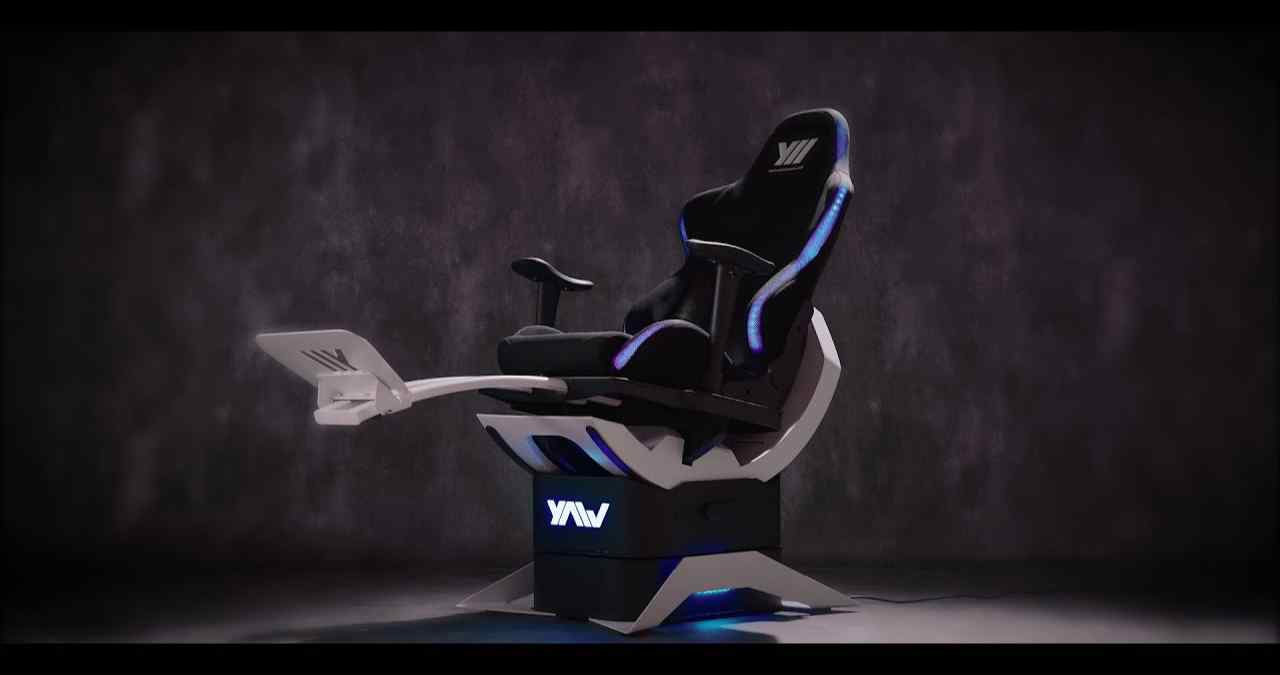Riding a roller coaster in VR used to be a visual-only experience. The headset would shake and tilt your perspective, but your body stayed still. That disconnect broke immersion, especially during sharp turns or free falls.
Now, haptic motion simulators are trying to bridge that gap. Compact seated platforms from companies like Yaw VR and RotoVR offer physical movement that matches what you see in the headset, adding weight, tilt, and spin to VR coaster rides.
Haptic chairs add motion where it matters
These motion rigs aren’t full-size arcade rides, but they recreate essential sensations. The goal isn’t to toss you around — it’s to sync your inner ear with the virtual track. By tilting forward on a drop or leaning into a loop, the system helps your brain accept what it sees.
Some units focus on yaw (side-to-side rotation), others lean into pitch and roll. The Yaw2 platform, for example, offers 360-degree spinning and reactive tilting. Paired with apps like NoLimits 2, the effect gets surprisingly close to a theme park ride, especially in VR headsets like Quest or Pico.
It’s not just the motion. Many setups now include vibration feedback, so you feel the rumble of the tracks or the jolt of a launch. That layered feedback helps compensate for the missing G-forces.
Setup is getting simpler, but still requires space
While these rigs are far more compact than full racing cockpits or flight simulators, they’re still a step up from typical living room VR. You’ll need floor clearance, a stable connection to your headset (either wired or wireless), and ideally a good seatbelt.
Most models are designed to be modular and foldable, but they still occupy more room than a static chair. Setup usually involves linking motion software with VR content, which varies depending on whether you’re using SteamVR, standalone headsets, or PCVR.
That said, compatibility has improved. Many roller coaster apps now support motion API integration, and platforms like Yaw VR are building native tools to sync with major VR titles.
It’s a niche, but with growing interest
VR motion rigs for home use are still niche, sitting somewhere between enthusiast hardware and experimental tech. But as headsets get lighter and more immersive, the demand for matching physical feedback is rising.
This tech isn’t just for coaster sims either. The same hardware works with flying games, mech pilots, or even horror experiences. Anything that benefits from motion syncing stands to gain.
While prices vary, entry-level platforms are cheaper now than they were a few years ago. For players looking to push VR immersion without going full theme park, these seated motion simulators offer an unusual but effective middle ground.
Virtual Reality Explorer & Game Reviewer
Always the first to plug in. VRSCOUT dives head-first into the most immersive VR worlds, analyzing mechanics, comfort, innovation, and that elusive “presence” factor. If he says it’s worth it, it probably is.




